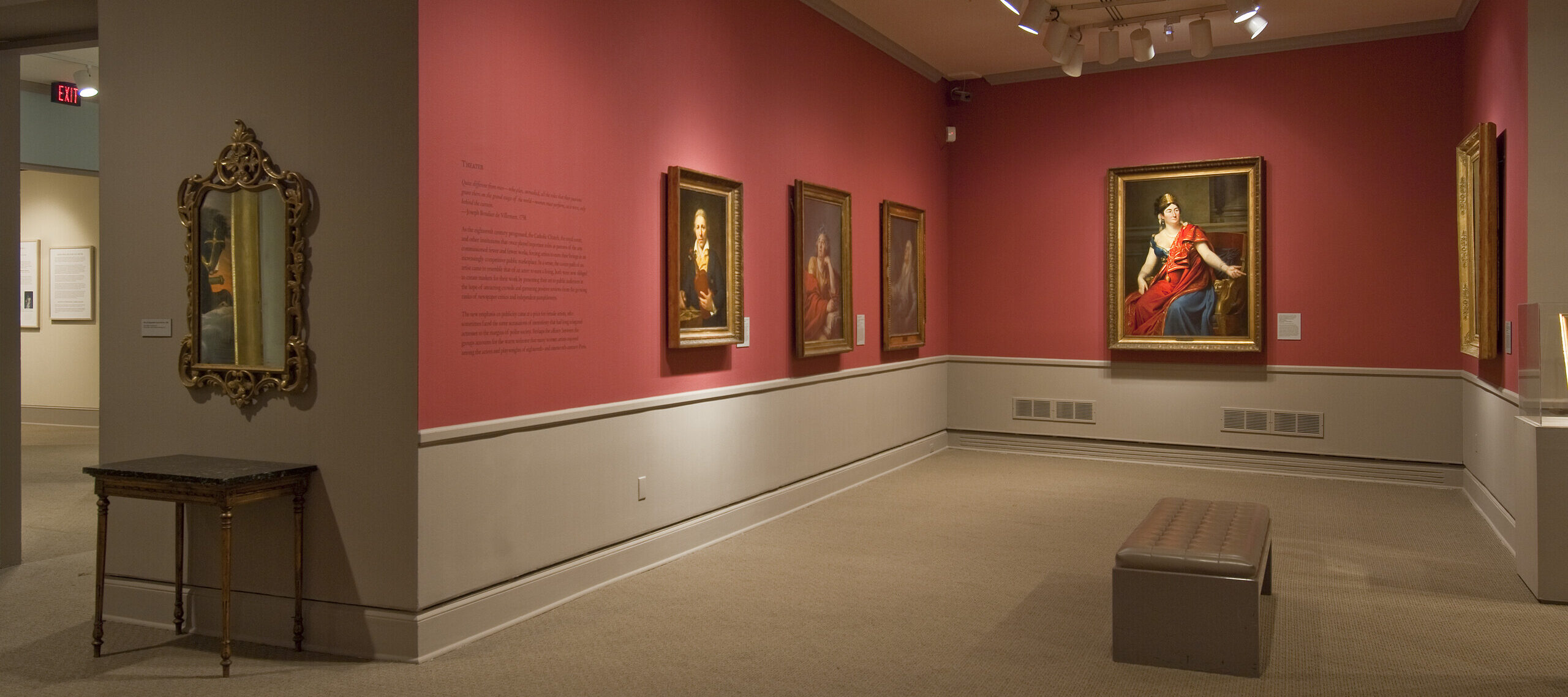In Royalists to Romantics: Women Artists from the Louvre, Versailles, and Other French National Collections, 77 works by 35 artists display the talents of French Revolution-era women artists. Their paintings are windows into their careers and the singular challenges of their time. The catalogue that NMWA has published to illustrate Royalists to Romantics includes essays as well as individual artist biographies that give insight into the lives of women artists working in France between 1750 and 1848. This excerpt explores the life of one the show’s featured artists, Césarine Henriette Flore Davin.

Césarine Davin enjoyed modest success as a painter of portraits and narrative paintings in both oils and miniatures. Having studied miniature painting with Jean-Baptiste- Jacques Augustin (1759–1832) and oil painting with two rival history painters, Joseph-Benoît Suvée (1743–1807) and Jacques-Louis David (1748–1825), she regularly exhibited in both media at the Louvre Salons from 1798 to 1822.¹ Her work garnered two awards: a second-class medal at the 1804 Salon and a gold medal at the 1814 Salon. The 1814 prize acknowledged her painting of the Death of Malek-Adhel (untraced), which must have been an exotic scene based on the popular 1805 novel Mathilde, ou Mémoires tirés de l’histoire des croisades (Mathilde, or Memoirs from the history of the Crusades) by Sophie Cottin.²
Davin, whose brother held a position in the Finance Ministry under Napoléon, also received some recognition from government authorities. In 1807 she delivered a portrait (Musée national des châteaux de Versailles et de Trianon) of François-Joseph Lefebvre, Marshal of the Empire, which had been commissioned for the Gallery of Marshals at the Palais des Tuileries. In 1825 she was asked to copy a portrait of Louis xviii. The painting included in the current exhibition, the Portrait of Askar Khan, Ambassador from Persia, in 1808 (cat. 34), exhibited at the Salon of 1810, was purchased for the museum at Versailles in 1836.³
Davin seems to have been married for several years by the time of her first exhibition, as her 1798 Salon offerings included Maternal Tenderness, a family portrait depicting the artist with her husband and their children.4 She is known to have been a regular guest at weekly soirees held by Adélaïde-Marie- Castellas Moitte (1747–1807), wife of the sculptor and object designer Jean-Guillaume Moitte (1746–1810), and to have joined in social events at the home of her teacher David.
Musicians, too, figured among Davin’s acquaintances. Madame Moitte reports seeing the violinist Antonio Bartolomeo Bruni (1751–1821) perform at a soirée chez Davin. Several portraits of musicians testify to such connections, including a portrait of Bruni in the Frick Collection, New York. Formerly attributed to David, this work was firmly identified by Georges Wildenstein as one of Davin’s 1804 Salon offerings.5
Like many female artists of the time, Davin supplemented her income by teaching young women. Her school, which opened in 1805, was reportedly still operating in the year of her death some four decades later.
Notes
1. Davin’s biography is based on Nathalie Lemoine Bouchard, Les peintres en miniature actifs en France, 1650 – 1850 (Paris, 2008), p. 181; Amy M. Fine, “Césarine Davin-Mirvault: ‘Portrait of Bruni’ and Other Works by a Student of David,” Women’s Art Journal 4, no. 1 (Spring-Summer 1983), p. 16; Margaret A. Oppenheimer, “Women Artists in Paris, 1791 – 1814” (PhD diss., New York University, 1996), pp. 155 – 57; Mary Vidal, “The ‘Other Atelier’: Jacques-Louis David’s Female Students,” in Women, Art and the Politics of Identity in Eighteenth-Century Europe, ed. Melissa Lee Hyde and Jennifer Milam (Aldershot, 2003), p. 257; and Georges Wildenstein, “Un tableau attribué à David rendu à Mme Davin-Mirvault: ‘Le portrait du violoniste Bruni’ (Frick Collection),” Gazette des beaux-arts, 6th ser., 59 (February 1962), pp. 93 – 98.
2. Émile Bellier de la Chavignerie, Dictionnaire général des artistes de l’école française depuis l’origine des arts du dessin jusqu’à nos jours (1882 – 85; rpr., Paris, 1997), vol. 1, p. 362, reports that the painting is untraced.
3. Claire Constans, Musée national du château de Versailles: Les peintures, introduction by Jean-Pierre Babelon (Paris, 1995), vol. 1, p. 225.
4. Jean-Francois Heim, Claire Béraud, and Philippe Heim, Les salons de peinture de la Révolution française, 1789 – 1799 (Paris, 1989), p. 177.
5. Wildenstein, “Tableau attribué à David.” The painting is illustrated in Fine, “Césarine Davin-Mirvault,” p. 16, fig. 1.
